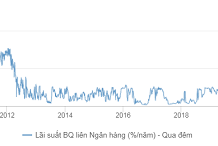In a discussion with a security expert from VPBank, the specialist revealed that in their efforts to help customers minimize the risk of financial loss due to fraudulent transactions, the bank has initiated the creation of a “blacklist” of suspected scam accounts within their system.
“We are collaborating with A05, the Cyber Security and High-Tech Crime Prevention Bureau under the Ministry of Public Security, along with NAPAS, to develop a comprehensive database of fraudulent and scam accounts,” the expert shared. “Whenever a customer attempts to transfer money to one of these accounts, we will issue a warning, and for accounts we are certain are used for fraudulent purposes, we will block the transaction immediately.”
Looking ahead, the database of flagged scam accounts is expected to expand across the interbank system, providing enhanced protection for customers of all participating banks and reducing the risk of falling prey to scam or erroneous transactions.

VPBank NEO offers automatic alerts and blocks transactions to suspected scam accounts
At present, the ideal timeframe for a bank to freeze funds that have been mistakenly or fraudulently transferred to a scam account is one day. This underscores the importance of customers promptly notifying their bank and authorities as soon as they realize they have been scammed.
Currently, VPBank is one of the few banks that proactively builds and maintains a blacklist of scam accounts, sending alerts and automatically blocking transactions to these accounts. This proactive approach is a significant step forward in safeguarding users of banking apps from the sophisticated schemes of high-tech criminals, especially given that many individuals remain unaware of these prevalent scams.
For instance, a resident of Dan Phuong district in Hanoi was recently tricked into installing a fake VNeID software and transferring money to a scammer posing as a police officer. After scanning a QR code and providing their facial recognition and OTP, the victim discovered that their bank account had been depleted of VND 1 billion.
The installation of fake software, as in this case, poses a severe risk of personal phone hijacking, personal information leakage, and financial loss from associated bank accounts.
Beyond the bank’s continuous efforts to enhance security measures, banking and security experts emphasize the crucial role of customer awareness and education. Customers must take responsibility for using banking apps effectively and securely to prevent personal information leaks, fraudulent transactions, and mobile device hijacking.
Firstly, the VPBank expert advises users to create strong passwords to prevent password guessing based on information gathered from various sources. Additionally, implementing biometric authentication for login and transaction verification adds an extra layer of protection, as an individual’s biological traits are unique and challenging to replicate.
To further enhance the security of banking apps and mobile devices, users are encouraged to update their software and app versions regularly. It is also imperative not to click on unfamiliar links, scan unknown QR codes, share OTP codes, or save passwords on mobile applications.
“If you suspect you have been scammed or your personal information has been compromised, resulting in financial loss or unauthorized access to your mobile device, it is crucial to act quickly,” the VPBank expert recommends. “Immediately lock your bank account, change your banking app password, and contact the bank’s customer support to report the incident. Also, ensure you block associated accounts and delete recent login sessions.”
These steps are vital to safeguarding a customer’s account and mitigating further damage while coordinating with the bank and investigative authorities to resolve the issue.
In addition to blocking transactions to suspected scam accounts, banking applications like VPBank NEO offer advanced security features, including vulnerability alerts, biometric authentication for new or unfamiliar devices, and protection against potential malware infections or unauthorized access attempts on users’ mobile devices.



































